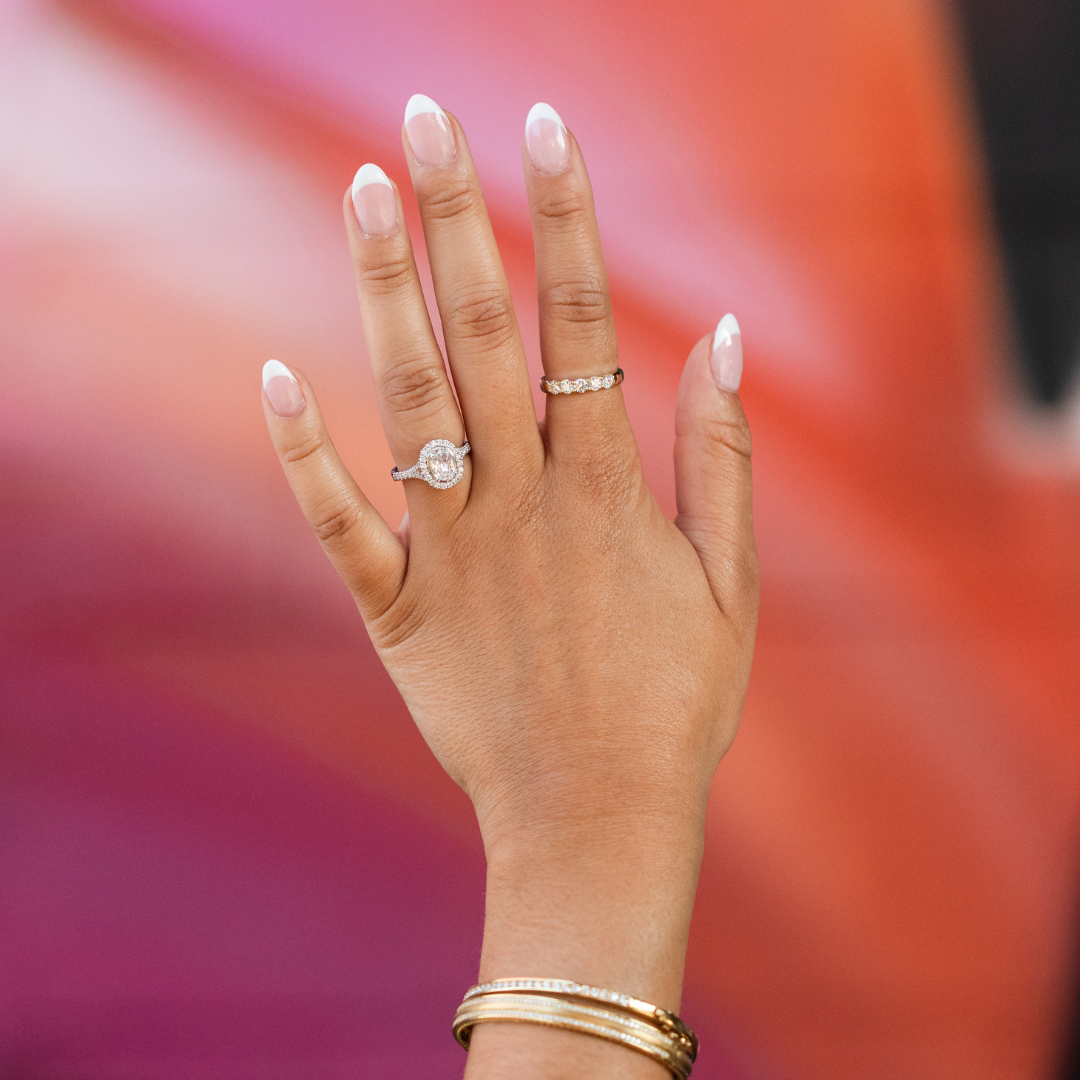
We all know that the four C’s are the determining factors of a diamond’s worth, but let’s face it – what are the first things you notice about a diamond? Its shape and size, of course! (And if you haven’t, ask the one you’re shopping for, they certainly have!) Even when we know that carat weight is more important than size, the eye is naturally drawn to what is immediately noticeable, and for many rings, that comes down to the size and shape of the diamond. No matter how many of the four C’s you check off, you’re probably going to go for the ring that appears largest on your beloved’s hand. Below are our four personal favorite cuts that make the diamond appear largest!

The Marquise Cut
When it comes to how large a diamond appears, you want to think of depth versus surface area. This area, also known as the “table”, is the flat, top part of a diamond. The table with more “spread” means the stone holds more weight towards the top rather than the bottom. In this case, elongated shapes actively contribute to the illusion of size, making the marquise cut appear much larger than, say, a princess cut which has more depth and weight “below” the table. You can go one step further and maximize the already-large appearance of a marquise depending on the setting and band you pair it with. Even better, marquise cut diamonds give the wearer the appearance of long and slender fingers.
The Pear Cut
The pear cut takes its name from the fruit with the same shape: one rounded side and the other, a tapered point. It’s thanks to that fine point that the pear cut appears slightly larger than the oval cut and is the perfect marriage of a marquise and oval. Again, it’s all surface area that makes this cut appear bigger than say, the emerald cut whose faceting style is designed to show clarity but doesn’t do much to enhance the apparent size. People are often shocked to learn that the pear-shaped cut is not as many carats as it looks!
The Oval Cut
This shape appears only slightly smaller than the pear, mainly because it lacks the tapered point that draws the eye along the length of the finger. Just like the marquise and pear, the oval’s length and larger surface area make the diamond appear bigger, and, as an added bonus, pair with a slender band to provide ultimate “oomph” while still giving the appearance of long, slender fingers.
The Round Cut
While the round cut is actually the largest cut diamond, its shape is meant to maximize the brilliance, scintillation, and fire of a stone. No matter how big, this shape is optimal for light refraction, meaning you’ll get the most sparkle from this cut. For this reason, the round cut is the most popular when it comes to engagement rings. However, because its mass is more evenly spread at the top, even if it is heavier, it will appear smaller than a marquise or pear cut of equal weight. You can add or detract from how it appears to the naked eye by choosing a band and setting that lets it sit a little higher on the finger.
Visit one of our Shreve & Co. locations in Palo Alto or San Francisco to explore our wide selection of diamond engagement rings! We would be happy to help you find the perfect piece for you and your significant other!


